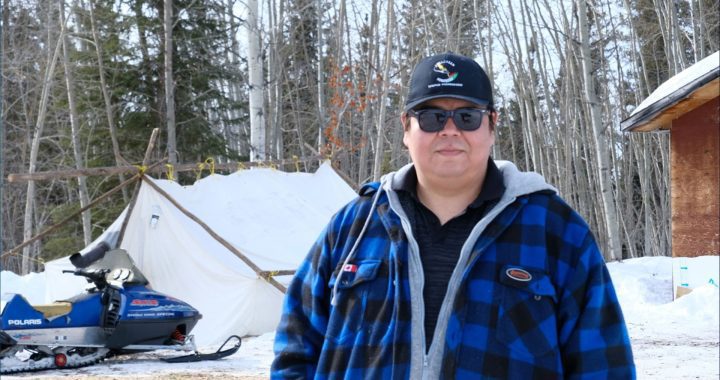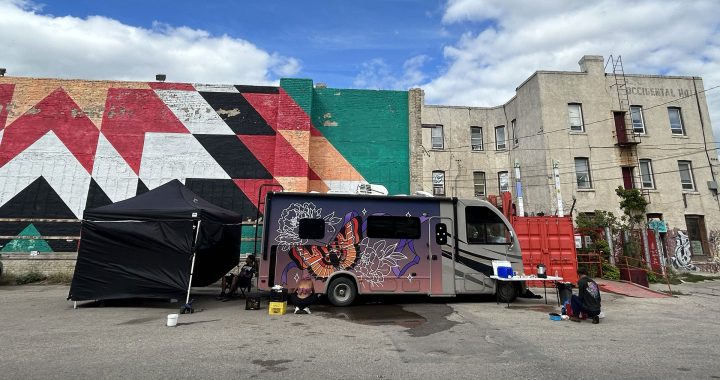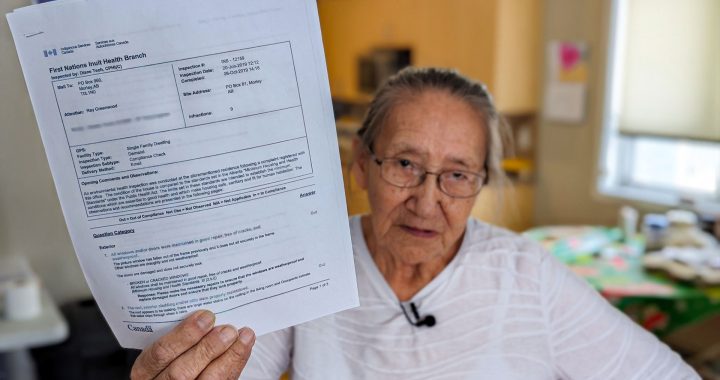(Green Arrow Renewable Energy Corp. solar panel installers at Montana First Nation. Submitted photo)
Brandi Morin
APTN National News
In the midst of a collapse in oil prices and an uncertain economic future, Albertans are also looking at ways to wean off of a dependence on oil and gas and on to alternative sources of greener energy.
And Alberta First Nation communities are readying to take advantage of the coming “solar revolution.”
“There is a solar revolution happening all over the world,” said Jesse Cardinal, co-ordinator with Keepers of the Athabasca and organizer for the We are the Land conference held in Edmonton last week. A major focus of the conference was providing education to Indigenous communities about renewable energy technologies.
Canada has just been slower to jump on board the solar wave compared to other countries, she added.
Many Alberta First Nation communities recognize solar initiatives as an opportunity that includes environmental and economic benefits.
“The difference between the solar and the oil industry – when the oil industry started taking off the Indigenous people were so behind in every way. We were the janitors, we were the house keepers and even now it was a slow evolution to become business owners. Whereas with the solar energy industry I see that it’s going to be a different playing field altogether,” said Cardinal.
Montana First Nation in Maskwacis launched the Green Arrow Renewable Energy Corp. last year. It is Canada’s first Aboriginal-owned company of its kind. The band office is now powered by solar energy and one home on the reserve is part of a solar powered pilot project.
Montana also recently partnered with Canada’s leading energy provider Bullfrog Power to build a 20 kW solar installation on Montana’s water treatment plant.
Green Arrow is working with several other First Nation communities across the Prairies to form partnerships to identify and assess the feasibility of clean renewable energy projects on reserve lands.
Green Arrow CEO Barry Wheaton said it helps to provide reserves with a means of self-sufficiency, spurs economic development and employment on reserve.
“We’re really hoping to use this to develop economic opportunities,” he said. “Solar is saving money on electricity bills, it’s reducing your carbon emissions, it’s reducing pollution and it creates jobs.”
Saddlelake Cree Nation in Alberta is also creating a solar project to power their water treatment plant.
Last fall, the Athabasca Chipewyan First Nation unveiled its first-ever solar pilot project that generates power to its youth and elder lodge.
The project is a model for future potential solar initiatives in the community that is located upstream from the tar sands in northern Alberta.
Alternative energy initiatives are spreading quickly and Cardinal said the response to solar technology is positive among most First Nation’s.
“I think people have a revived sense of hope that it isn’t the end of the world. That we can still live a long life, there’s hope for us. Whereas before we were just digging our own graves in the oil sands and that was the only solution we had. But with this new technology it’s really exciting,” said Cardinal.
With the scale of the destruction to the land, the impacts on the air and animals and the health impacts on people, the havoc caused by tar sands extraction can no longer be ignored, she added. And it’s time to think outside of the “Alberta Box.”
“We’re at a point where we have to make a choice. Do we want a future for our children? Do we want clean water and do we still want to have jobs to go to? Then we need to diversify our economy, we can’t just depend on one source of economy,” said Cardinal.
With the new NDP government promising a shift to greener alternatives, Cardinal is hopeful that more funding will be made available for future Aboriginal solar projects.









